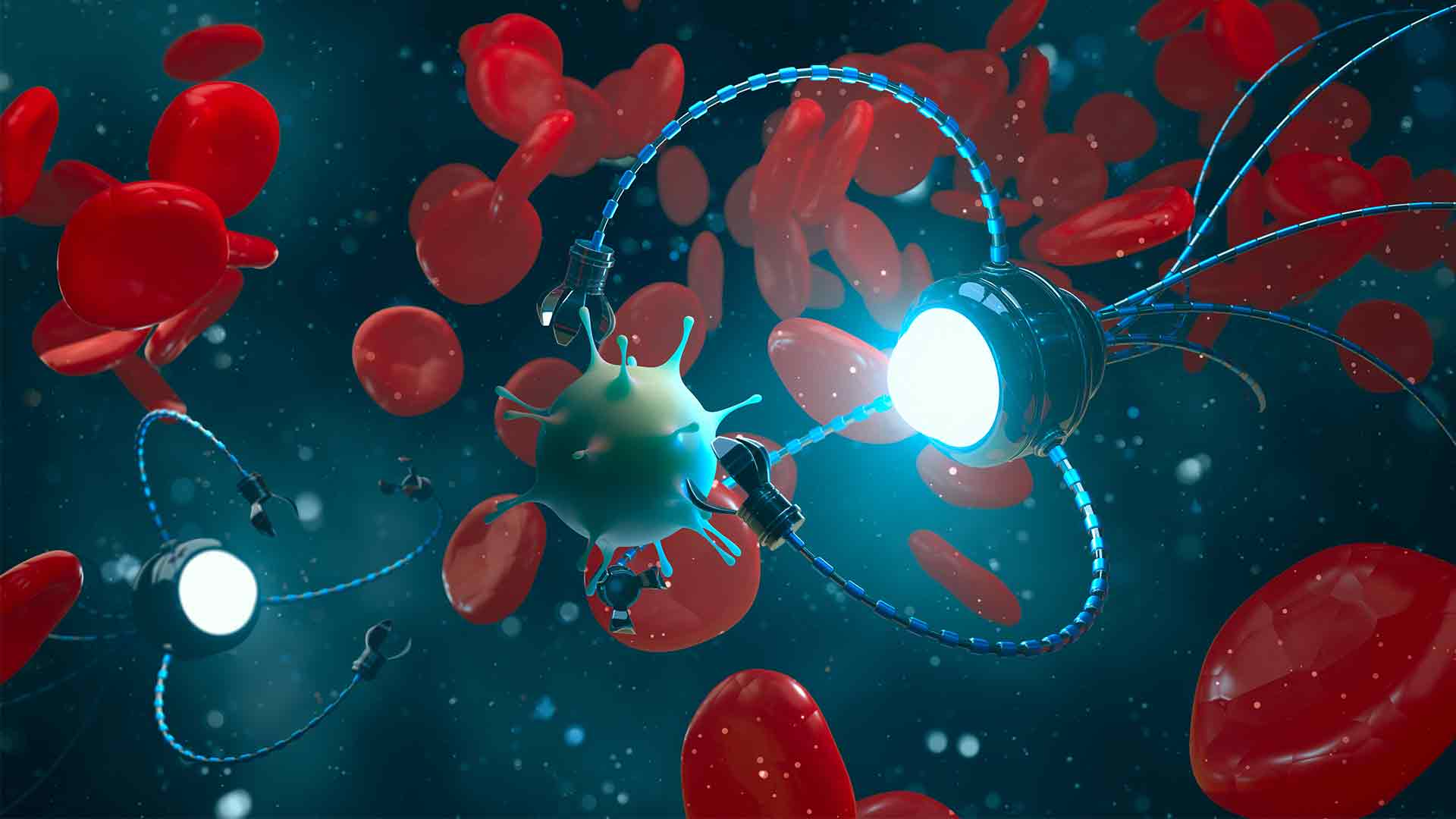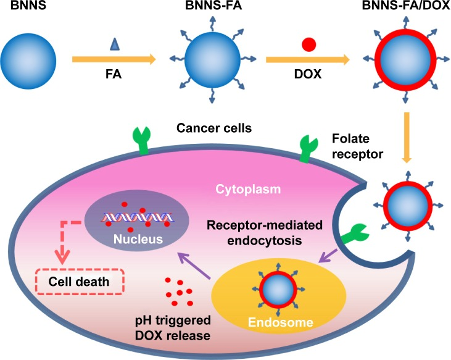Boron Nitride for Drug Transportation
Boron, specifically Boron Nitride( BNNT), is being considered for its potential to transport drugs and probes for biomedical use. BNNTs as nanocarriers in combination with Curcumin, whose properties support lower dosage and targeted release, ensure that the optimum amount of a drug reaches the site of action, bypassing barriers such as acidic pH of the stomach, liver metabolism, and increasing prolonged circulation into the blood. Cancer research and therapies may benefit from this combination.

Boron in Medical Nanotechnologies
Boron in Biomedical Applications
The unique properties of boron nitride (BN) are gaining interest in biomedical research with the application as a drug and probe transporter in humans. Boron Nitride has already begun to be used in various biomedical applications, raising great expectations in the delivery of drugs and genes.
Relevant Applications include sensing applications, hydrogen storage, capture neutron therapy, drug delivery, and biomaterial applications. Specifically, research continues into the adsorption of different molecules, including CO2, NH3, Ni, and anticancer drugs in boron nanotubes.
A recent study by Medical Research experts found that Boron, specifically BNNT, can transport drugs and probes in animals and humans. It is being investigated as a potential method for developing an anticancer drug delivery system using folate-conjugated BN nanospheres (BNNS) with receptor-mediated delivery.
Boron Nitride (BNNT) and Curcumin
With ongoing research into applications based on nanotechnology, nanoparticles have become the subject of interest for potential in drug delivery systems. Nanocarriers ensure that the optimum amount of a drug reaches the site of action, bypassing barriers such as acidic pH of the stomach, liver metabolism, and increasing prolonged circulation into the blood.
Research has determined how cells respond to boron nitride nanotubes (BNNTs) carrying fluorescent sensors or compounds by monitoring cellular localization and measuring the in vitro release and biological activity of a compound (Curcumin) loaded in BNNTs.
What is Curcumin
Extracts of Curcumin can be obtained from turmeric, one of the most commonly used spices in China, India, and other Asian countries. Curcumin is a principal component of nutraceutical molecules and is used in the food and pharmaceutical industries. One of several potent Phyto molecules, Curcumin exhibits a wide range of biological activities.
Curcumin’s properties make it a suitable candidate for delivery through a nano-delivery system offering the following benefits:
Improving the solubility of the medication
Enhancing the bioavailability of the medication
Reducing the dosage of the medication
Targeting the site of action of the medication
Controlling the release of the medication
Use as a drug is, to date, limited mainly due to its low bioavailability and poor solubility (11ng/ml) as well as significant pre-systemic biotransformation, primarily via glucuronide and sulfate conjugation. In combination with BNNT, however, its efficacy may be improved.
Method
A study into Curcumin and BNNT describes the method of use:
“By treating cells with curcumin-loaded BNNTs and stimulating them with lipopolysaccharide, we have measured nitric oxide release as well as the production of IL-6 and TNF???? in these cells. BNNTs loaded with two cell-permeant dyes and a non-cell-permeant dye were imaged to determine the cellular trafficking.”

Boron Nitride and Circumin
Source – PMC Labs
Potential Applications
Cancer
The disease of cancer is one of the most devastating diseases that exist today. It is now possible to treat cancer with a diverse range of therapies, including surgery, radiation, chemotherapy, and combinations of these therapies. Unfortunately, these therapies are often associated with severe side effects and harm to the patient.
It is particularly concerning that chemotherapy drugs used for treating cancer have some limitations, such as non-specific distribution of cells and tissues, short blood circulation times and, multi-drug resistance, which significantly limit the therapeutic efficacy of these drugs.
As of late 2021, nanocarriers have been developed to enhance the effectiveness of cancer treatment by delivering drugs via nanocarriers. Compared with traditional forms of distribution of free medications, the delivery of nano carrier-based drugs has unique advantages, such as more efficient tumour accumulation due to increased permeability and retention effects.
In addition to these effects, nanomaterials may also confer other benefits such as improved chemical stability, controlled release, or protection from the body’s immune system, which could improve therapeutic efficacy. Moreover, the incorporation of drugs into nano-sized delivery vehicles and the reduced self-destruction of chemotherapeutic drugs are some of the potential benefits of this advanced research.
A second study shows that BNNTs containing fluorophores are internalized by cells. The controlled release of Curcumin, a given drug with anti-inflammatory effects, triggers cellular pathways associated with these effects.
In this study, folic acid (FA) was successfully grafted onto BNNS. In vitro experiments with HeLa cells showed BNNS-FA complexes to be non-toxic up to a concentration of 100 μg/mL.
Following this, doxorubicin hydrochloride (DOX), one of the most commonly used anticancer drugs, was loaded onto BNNS-FA complexes. The pH-sensitive and sustained release of DOX occurred at pH 5.0 when the BNNS-FA/DOX complexes were stable at pH 7.4.
The BNNS-FA/DOX complexes were identified as FA receptor-mediated endocytosis products within HeLa cells. As a result of increased uptake of DOX by the FA receptor, BNNS-FA/DOX complexes exhibited more significant cytotoxicity to HeLa cells than free DOX and BNNS/DOX complexes. Thus, there is a strong potential for targeted cancer therapy with the BNNS-FA complexes.
Boron in Curcumin: Other Clinical Applications
The antioxidant properties of Curcumin make it an excellent ingredient for use in cosmetics and food additives. There is some evidence that Curcumin can protect the brain against the adverse effects of oxidative stress. It can further improve insulin sensitivity and inhibit angiogenesis, making it beneficial as an anti-diabetic agent. In combination with BNNTs as a transporter, efficacy and accuracy of dosage and monitoring will improve over time.





